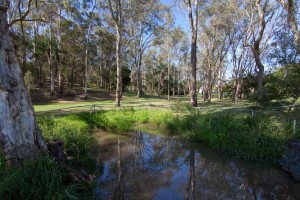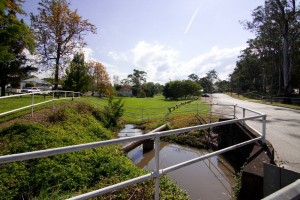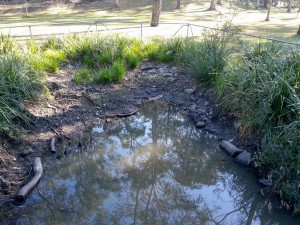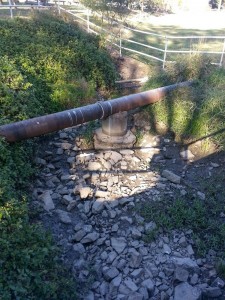It’s been a long time between posts. As per the forecast, my PhD has reduced this blog from a bubbling stream to a lifeless dry creek bed. But any stream can be revived with a little rain. And with a lot of rain, it all comes flooding back.
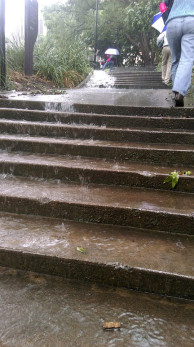
‘UQ Falls’ – posted to the Facebook group ‘UQ StalkerSpace’ by Panashé Machinguara just after midday on 1 May 2015.
‘A lot of rain’ is one way to describe what Brisbane experienced on Friday the 1st of May, 2015. ‘Extraordinary weather event’ would be another. The gauge in the CBD recorded 182mm of rain in the 24-hour period from 9am that morning. To put that in perspective, the historical average rainfall for the entire month of May is 74mm. The record for the largest daily fall at this time of year stands at 190mm on 26 April 1989, but the recent event set a new daily record for May, with the previous record being 149mm on 9 May 1980.1
Personally, I’d had enough of the rain long before any records were broken. My trip into the University of Queensland at St Lucia that morning took nearly two hours because of a track fault somewhere near Yeronga Station. ‘Local flooding’ was said to be the cause. I enjoyed the rain a lot more from the other side of my office window, but was forced to venture out again at around 4pm. By that time, every road and pathway on the campus was a raging torrent. Continue reading
Notes:
- All of this rainfall data is available from the Climate Data Online section of the Bureau of Meteorology website. The historical data comes from the the Brisbane Regional Office station (040214), which operated from 1840 until 1994, while the more recent data comes from the Brisbane station (040913), which commenced operating in 1999. ↩


